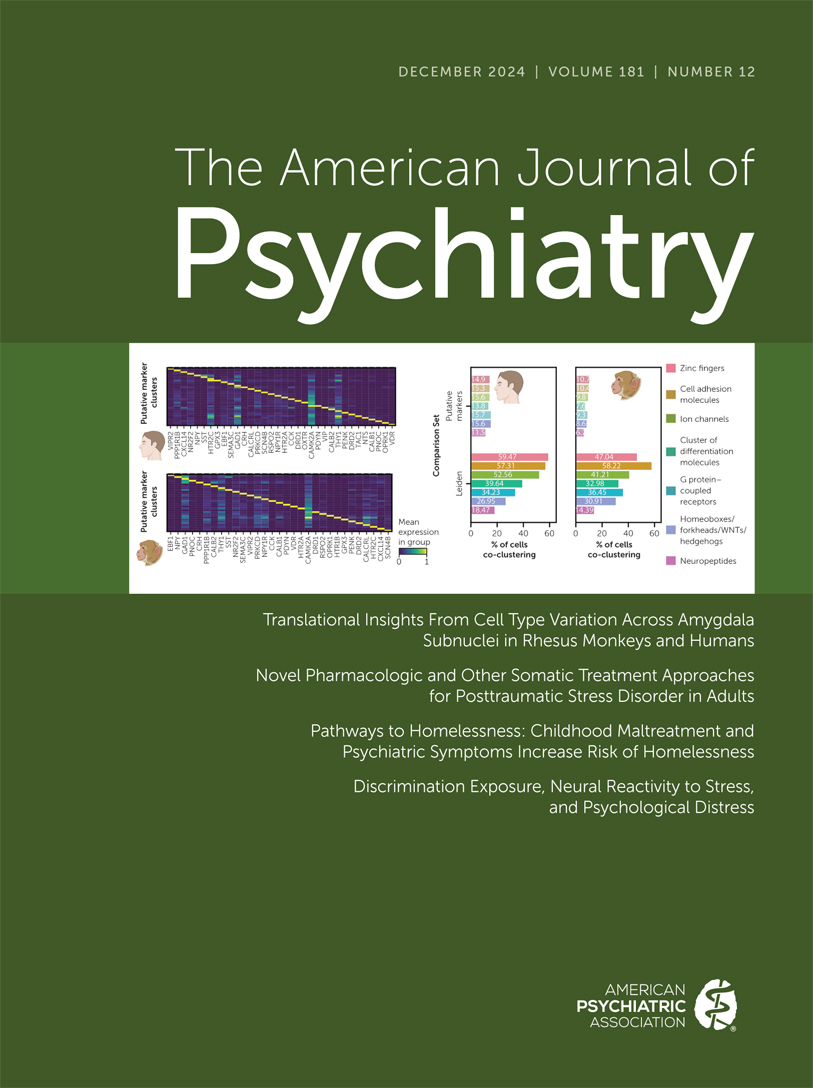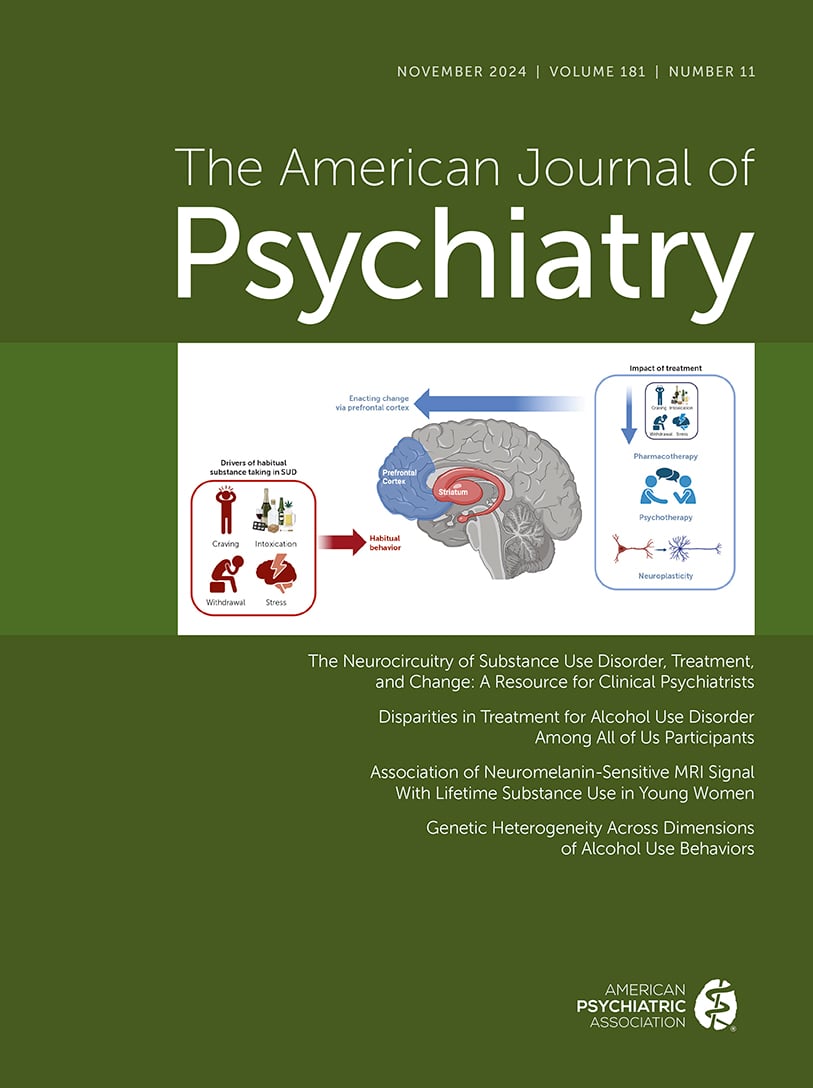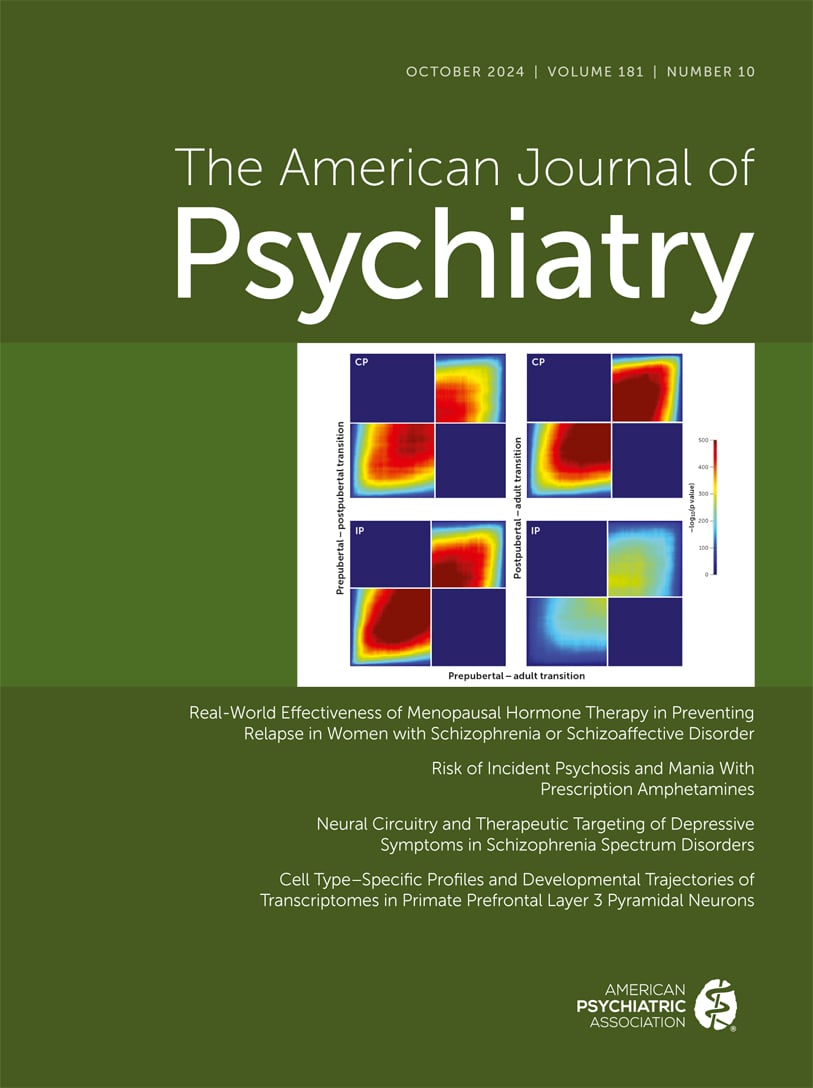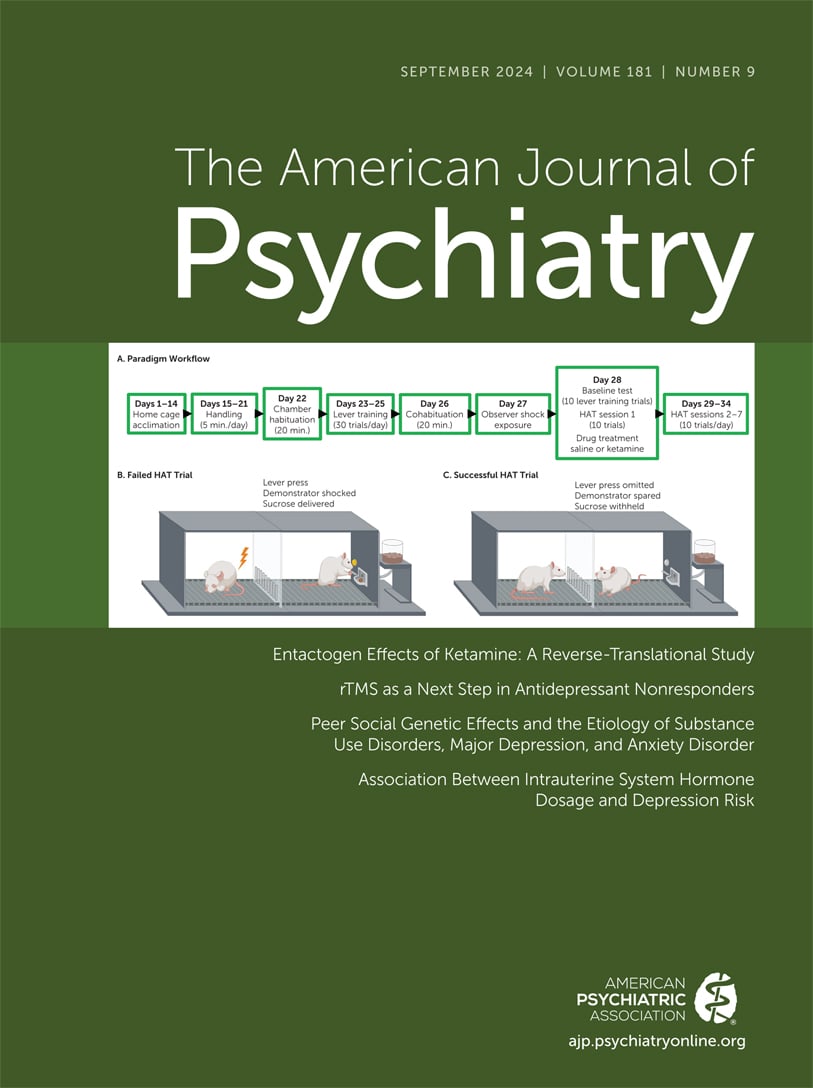American Journal of Psychiatry
- Volume 145
- Number 12
- December 1988
Publication date: 01 December 1988
Pages1495–1500As soon as there is reasonable evidence for the diagnosis of Alzheimer's disease (primary progressive degenerative dementia), the physician should urge legal and financial counseling of the patient and the family in planning for the patient's long-term ...
https://doi.org/10.1176/ajp.145.12.1495Publication date: 01 December 1988
Pages1501–1506The authors critically reviewed the literature on benzodiazepine use among alcoholics, psychiatric patients, and the general population to determine whether alcoholics have a greater liability for benzodiazepine abuse. Data suggest that the prevalence of ...
https://doi.org/10.1176/ajp.145.12.1501Publication date: 01 December 1988
Pages1507–1513Cumulative or chronic environmental stress and high scores on psychopathology scales have been consistently linked to preterm labor. In the laboratory, psychological stimuli have also been shown to affect uterine activity. Clinical studies suggest that ...
https://doi.org/10.1176/ajp.145.12.1507Publication date: 01 December 1988
Pages1514–1520Lack of third-party reimbursement is frequently cited as a cause of underutilization of partial hospitalization. The authors contacted a sample of health maintenance organizations (HMOs) and public and private payers to obtain information about their ...
https://doi.org/10.1176/ajp.145.12.1514Publication date: 01 December 1988
Pages1521–1525To evaluate the need for maintenance drug therapy in patients with obsessive-compulsive disorder, the authors assessed 21 patients with obsessive-compulsive disorder who manifested sustained improvement during 5 to 27 months of clomipramine treatment and ...
https://doi.org/10.1176/ajp.145.12.1521Publication date: 01 December 1988
Pages1526–1531The concentration of thyrotropin-releasing hormone (TRH), a tripeptide (pyroglutamylhistidylprolin-amide), in the CSF of drug-free patients with DSM-III major depression, somatization disorder, and peripheral neurological disorders was measured with a ...
https://doi.org/10.1176/ajp.145.12.1526Publication date: 01 December 1988
Pages1532–1537The authors studied 46 patients with the operationally defined syndrome of postpsychotic depression following episodes of schizophrenia or schizoaffective disorder. Half of these patients were also found to satisfy criteria for negative symptoms. The ...
https://doi.org/10.1176/ajp.145.12.1532Publication date: 01 December 1988
Pages1538–1543Koro, a culture-related psychiatric disorder characterized by panic due to fear of genital retraction, occurred as the rare phenomenon of koro epidemics in a remote region of Guangdong, China, in 1984-1985 and 1987. The sociocultural and historical ...
https://doi.org/10.1176/ajp.145.12.1538Publication date: 01 December 1988
Pages1544–1549Over the past 15 years the health maintenance organization (HMO) movement has abandoned its social objectives in favor of economic ones. The early emphasis on making equitable and affordable health care available to populations has been superseded by ...
https://doi.org/10.1176/ajp.145.12.1544Publication date: 01 December 1988
Pages1552–1556Eight patients with hypersomnolent, anergic major depression benefited markedly from treatment with relatively high doses of phenelzine or tranylcypromine but experienced intense afternoon somnolence and disrupted sleep. Reducing the dose of monoamine ...
https://doi.org/10.1176/ajp.145.12.1552Publication date: 01 December 1988
Pages1557–1559The authors describe the manic symptoms, family psychiatric histories, and psychotic symptoms of 10 prepubertal children 6-12 years old who had a DSM-III diagnosis of manic episode with psychotic features. All of the children improved when treated with ...
https://doi.org/10.1176/ajp.145.12.1557Publication date: 01 December 1988
Pages1560–1563The authors compared 10 nondepressed patients with obsessive-compulsive disorder with 10 normal control subjects of the same sex and similar age for cerebral glucose metabolic rates obtained using positron emission tomography. Obsessive-compulsive ...
https://doi.org/10.1176/ajp.145.12.1560Publication date: 01 December 1988
Pages1564–1567Of 20 patients suffering from panic disorder with agoraphobia, 18 reported experiencing agoraphobic avoidance, generalized anxiety, and/or hypochondriacal fears and beliefs before the first panic attack. The prevalence of these symptoms in the patients ...
https://doi.org/10.1176/ajp.145.12.1564Publication date: 01 December 1988
Pages1568–1571The authors collected data concerning assaults, assaultive patients, and victims in a psychiatric unit during a 12-month period and compared them with data from a control group of patients. Thirty-seven assaults by 25 patients were recorded. Fourteen of ...
https://doi.org/10.1176/ajp.145.12.1568Publication date: 01 December 1988
Pages1572–1575Conversion paralysis has a poor prognosis when there is evidence of nonresponse to previous treatment, long duration, and secondary atrophy of the "paralyzed" muscles. The authors present four such cases in which conversion paralysis was treated ...
https://doi.org/10.1176/ajp.145.12.1572Publication date: 01 December 1988
Pages1576–1578The duration and symptoms of manic and depressive prodromes of 20 bipolar patients showed much interindividual variation. However, these features were consistent in successive episodes of the same type in the same patient. Manic prodromes were longer than ...
https://doi.org/10.1176/ajp.145.12.1576Publication date: 01 December 1988
Pages1579–1581Postpartum thyroiditis has been suggested as a cause of psychosis following pregnancy. However, 30 hospitalized psychotic postpartum women and 30 control subjects matched for age and time since delivery showed no significant differences in thyroid ...
https://doi.org/10.1176/ajp.145.12.1579Publication date: 01 December 1988
Pages1582–1584Twenty-five (16%) of 160 psychiatrically hospitalized children were given diagnoses of depressive disorders. None of 12 diagnostic categories from DSM-III axes I and II occurred significantly more frequently among these depressed children than among the ...
https://doi.org/10.1176/ajp.145.12.1582Article
Article
Article
Article
Past Issues
View Issues Archive
Vol. 181 | No. 12

Vol. 181 | No. 11

Vol. 181 | No. 10
